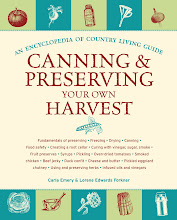Gravy. Just typing the word unleashes a Pavlovian salivation reaction. This wonderful creation (one of the best cooking inventions ever, in my opinion) is great at any time of the day. Yes, you may want to hit the gym both before and after indulging in this down-home country treat, but trust me, it can be worth it.
Or… not. There’s been many times when I have decided to pamper myself with an order of biscuits and gravy at a small diner, only to be served a bowl of gray, lumpy mush, far from the creamy brown goodness I was expecting. In these situations, it’s all I can do to suppress a gag reflex.
So how can it be that the same ingredients can produce heaven and can also mix to create something akin to vomit? It all comes down to technique.
Gravy is a culinary skill requiring some serious trial and error. Perhaps you recently found that out during the past holiday. Did your Thanksgiving gravy turn out too lumpy? Or maybe it was too runny? Wondering where you went wrong? Since there’s no tried-and-true recipe, sometimes creative license can run amuck of good taste.
Quick, now’s the chance to perfect this oh-so-touchy holiday staple before it can ruin another holiday dinner. Or Sunday breakfast. Or Tuesday breakfast. Or midday snack. Or… you get the picture.
Once again, Carla Emery comes to our rescue:
Good gravy to go on the potatoes can be made any time you fry or roast meat. When your meat is done, remove it from the pan. Estimate how much gravy your family can use. If you want 1 cup, pour off the grease until you have about 2 T. left, 4 T. for 2 cups, and so on. If you don’t have that much, add a little melted butter, bacon drippings, or lard. Loosen all the good brown bits in the bottom of your pan (assuming you don’t have a burnt mess, in which case salvage some grease by pouring off the top and start over in another pan), and add 2 T. whole wheat or unbleached flour per 2 T. grease.
For heaven’s sake, don’t stop to actually “measure” the hot grease and flour. You can learn to estimate close enough by looking at it, and it really doesn’t make that much difference if you use a little more or less of either. Just don’t have a whole lot of extra grease, because it will float on top of your gravy and look and taste yuk!
Over medium heat make a paste of the brown bits, grease and flour with your fork, and let cook a couple minutes, stirring constantly. This accomplishes the browning and cooking of your flour and gives you almost an “instant” gravy. Your mashing action with the fork will break up potential lumps. Now pour in a little liquid.
Stir it in until the lumps are gone; then add more and stir again until the lumps are out. Repeat until all your liquid is added. You can add more liquid each time, but start with very little. Stop adding liquid when your gravy is as thin as you want it.
For liquid, use your potato water, water from another cooked vegetable, or milk. Or juice from a pot roast or stewed chicken, if you have it. I drain the vegetable waters into the gravy (or else add them to the animal pail) and then cook that down to the wanted density. Pork-chop gravy is good with half milk and half water or all milk. Chicken gravy is good with half or all milk. Beef gravy is good with part milk or just your vegetable water. Deer, elk, and other game gravies don’t get along with milk. Game gravies are much improved by adding a couple tablespoons of currant, wild plum, or some other tart jelly. For roast turkey, duck, or goose, use no milk, but add the chopped cooked giblets and the giblet broth for a delicious gravy.
If you get the gravy too thin and watery, you can boil it until it thickens enough to suit you. Finally, salt and pepper to taste. Taste it until it seems right, but don’t burn your tongue! Good gravy seasonings are black pepper, onion powder, thyme, sage, marjoram, and basil. For a final garnish, sprinkle freshly chopped parsley, dill, chives, or scallions on top. Then serve to pour on your meat and mashed potatoes, rice, or thick slices of bread in a sturdy bowl with a good dipper. And put the pan to soak in the sink, so it won’t be a chore to wash.








No comments:
Post a Comment